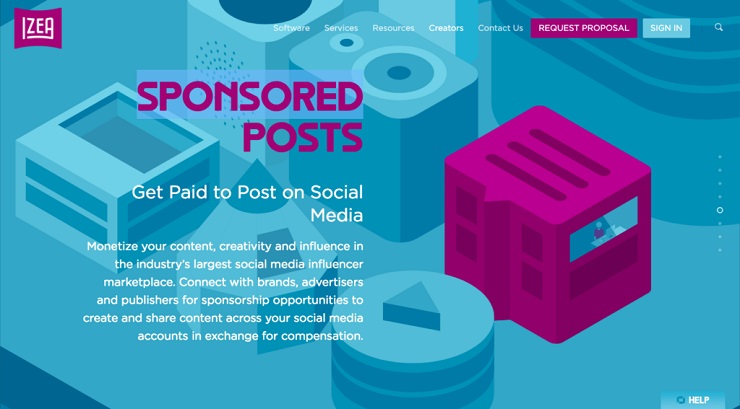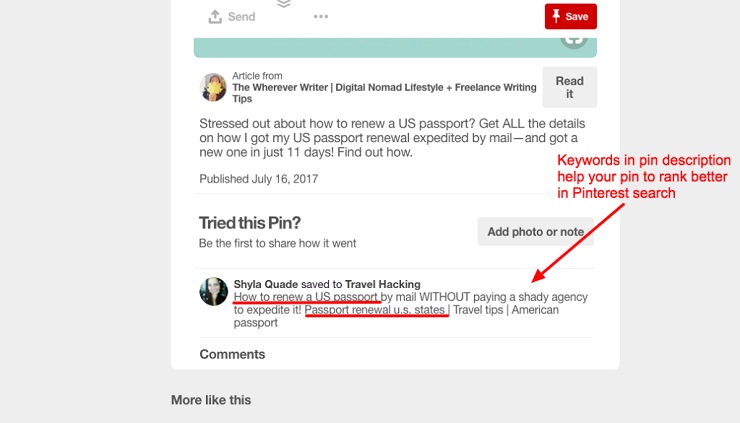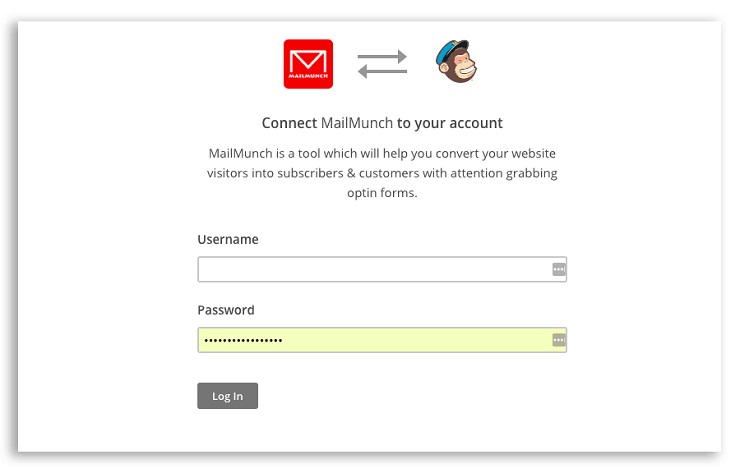Imagine a business with high-profit margins, low overhead, and no physical products, a business you could run from the comfort of your own home while bringing in high six figures a month, with a platform you probably already use.
That may seem like a fantasy (or a promise from a cheap web ad), but for many entrepreneurial bloggers, it’s reality. Bloggers like Lindsay and Bjork Ostrom, whose food blog earned more than $50,000 in August 2016 alone from a mix of ads, affiliates, sponsorships, and digital products. Or stay-at-home mom Sarah Titus, who says her blog now makes $1 million a year and whose most recent income report shows more than $75,000 in July 2017, mostly from selling printable calendars and other materials.
“I’m able to have an online store, not pay for lighting, renting of a building, paper to print my products on, et cetera,” Titus says. “So all of those costs I get to keep in my pocket and deliver digital printables instead.”
Blog monetization is all the rage right now, with online courses and ebooks promising passive income for anyone with a computer and a CMS. But as the saying goes, if it were that easy, everyone would be doing it.
So what separates the wannabe profitable bloggers from the truly profitable ones? I decided to talk with a handful of bloggers who make at least six figures a year to learn what it really takes to build a successful blogging business.
Table of Contents
Step 1: Define Your Audience’s Problems and Your Blog’s Solutions
Step 2: Choose Your Income Streams
Step 3: Get Targeted Traffic to Your Blog
Step 4: Grow and Nurture Your Email List
Step 5: Analyze, Tweak, and Repeat
Just as with any other business, you need to have a plan in place for your blog. Before you even begin to think about making $50,000 a month from your blog, you need to start treating it as not just a blog, but a business.
Bjork says he and his wife really started to treat PinchOfYum.com as a business when the income from their food blog started to replace the income from their day jobs. “Once that happened, we started to strategically think about not only how much we were earning, but also the best ways to allocate our most precious resource—time,” he says. “Being intentional with how we spend our time has been one of the most important mindset shifts we’ve made.”
So what does every savvy entrepreneur do before they launch a new venture? They create a business plan. Regardless of how long you’ve been blogging (even if you are a newbie), walk with me through the following five steps to create your monetization strategy (we’ll call it our “blog business plan”) and fast track your path to profitability.
How to Create a Business Plan to Monetize Your Blog
Step 1: Define Your Audience’s Problems and Your Blog’s Solutions
While most blogging business experts would say “niche down,” I think the more important strategy is to clearly define the problems your target audience has and how your blog offers solutions to those problems. Profitable blogs don’t necessarily have narrowly defined niches.
SarahTitus.com, for example, has blog posts on topics ranging from essential oils to making a living on eBay. What successful bloggers are focused on, though, is providing immense value to their loyal readers.
Even if it’s not super-focused, you still need to pick something you care about and that has some staying power. According to Harsh Agrawal, whose blog ShoutMeLoud.com crossed the $50K/month threshold last year, choosing a strong niche is key to hitting that kind of income milestone.
“The most important thing is choosing a niche segment that you strongly believe in and one that is going to last,” Agrawal explains. “The key here is your interest and choosing the right field of blogging.”
There are a couple ways you can approach your niche selection:
One, you could start with your current audience and work backward from there.
If you’ve been blogging for months, or even years, and you are just now trying to monetize your blog, you’re not alone, and there’s nothing wrong with that. In fact, you are in a great place to reverse engineer the products you will sell. What do I mean by that?
In a move multimillion-dollar business founder Gretta Rose van Riel likes to think of as “market-product fit,” if you have already built an engaged audience, you can create a product that’s perfect for them.
An easy way to start is to go into your Google Analytics account and navigate to Demographics > Overview to see the breakdown of age groups and gender of your blog’s visitors.
To see the categories your visitors are most interested in, go to Interests > Overview:
Still unsure who your audience is or what they want? Ask them! Create a survey and send it out to your email list, post it on social media, and post it on your blog. You can do this for free with SurveyMonkey or Google Forms.
Two, you could start with the topics you know well and can write about often.
What do you have experience with? What kinds of problems have you personally dealt with? What topics can you write about on a continual basis (every month for years to come)?
It has to start with passion,” says Trevor Debth of ShowMeTheYummy.com. “If you’re not passionate about your blog topic, then you’ll never last; it’s too much work.” He and his wife Jennifer have grown their food blogging business income to just shy of $500K a year.
Step 2: Choose Your Income Streams
Now that you know who your target audience is and what kind of problems they have, you can look for paid solutions to those problems. There are many ways you can monetize your blog, but today I’ll focus on the popular ones: advertising, affiliate income, your own product, and sponsorships.
Advertising
Of all the blog monetization methods, advertising is arguably the most passive because it requires nothing more than applying to an ad network and pasting code into your site; the ads are served automatically, requiring little upkeep on your part.
For the husband-and-wife duo at PinchOfYum.com, which earned $52,313 from AdThrive in November 2016, ads are a favorite income stream. “Ads allows us to publish content without selling anything,” says Bjork. “It’s content for the sake of content, which is great.”
When you’re just starting out, Google AdSense is your best bet. As your traffic grows, you’ll start qualifying for higher paying ad networks, such as AdThrive, which requires a minimum of 100,000 pageviews a month to apply.
Affiliate Income
What is affiliate income? When you are an affiliate for a product, you recommend a product and then receive a commission each time someone purchases that product through one of your personalized affiliate links. If you want to build trust with your audience and improve conversions, only be an affiliate for products you use and love. You’re also required by the FTC to disclose when you use affiliate links.
To become an affiliate, you can go through large affiliate networks like ShareASale or CJ Affiliate; they have huge databases of affiliate programs you can join.
Here’s a peek inside my CJ Affiliate dashboard showing some programs I could potentially join:
Alternately, you can simply Google “ affiliate program” to see if a product you love has its own affiliate program in place.
Your Own Product
Selling your own product directly on your blog has the potential to earn you the most income per sale and gives you the most control.
Let me give you an example:
If I write an ebook and sell it via Amazon Kindle Direct Publishing, the most I’ll get to keep is 70% of the list price from each sale, plus, I don’t get any information on who bought my book. But if I sell my ebook directly on my blog via PayPal, Gumroad, or SendOwl, I get to keep a larger percentage of that sale, plus I’ll receive the email address of each buyer, meaning I can follow up on that sale.
Right now, I use Gumroad to sell ebooks on my blog. On the free plan, Gumroad keeps 8.5% + $0.30 per sale. That’s still better than the 30% Amazon would keep.
Sponsorships
Sponsorships are essentially another form of advertising. When a brand purchases a sponsored post from you, they have control over a post about their brand that gets published on your site or on your social media for a fee.
If you take this route, be sure to have the terms clearly stated and agreed to prior to beginning work. Some bloggers only allow sponsored posts to stay up for one year. Be upfront with your sponsoring brands about what a sponsored post includes.
To get sponsored posts for your blog, you can sign up for influencer marketing platforms like IZEA, which connects you with brands interested in sponsoring bloggers.
Alternatively, you can reach out to your favorite brands with a sponsorship proposal.
The key with Step 2 is to find paid offers that solve the problem that you’ve identified you can help your target audience with. For example, if you decide to start a blog about easy-to-make recipes for busy moms, it makes no sense to do a sponsored post about bookkeeping software. Not only is it irrelevant to your target audience, but it also may alienate them. In this example, it would be more aligned with your blog’s mission if you wrote an affiliate review of your favorite cookbook or worked out a partnership with a food brand.
Attention: Building a high-earning blog requires knowing how to write copy that sells. If you want to learn the simple copywriting techniques behind 10 multimillion-dollar product launches and get a 10-step copywriting formula anyone can follow, check out our 7-Figure Copywriting course. Click below to learn more and join our VIP waitlist to be notified when the course opens for enrollment.
Step 3: Get Targeted Traffic to Your Blog
Without prospects coming through your virtual doors, how will you make sales? The biggest struggle for beginner bloggers is growing their traffic. Traffic can come from many different channels: Search engines, social media, referrals, and even paid ads. Now that you know who your audience is, what problems they have, and how your blog solves those problems, you are in a much better position to get targeted traffic—meaning visits from the people who are most likely to buy from you. For the purposes of this blog post, I’ll focus on two popular traffic sources: organic search and social media.
Organic Search
Organic search includes any traffic from search engines such as Google, Bing, and Yahoo, but Google is obviously the biggest player here.
Google is PinchOfYum.com’s favorite traffic source; the food blog received more than 1.5 million visits via Google in November 2016. “We love that Google is a long-term play,” Bjork says. “You can’t get there quick (usually), but once you’ve established credibility and have solid content, then you’re rewarded with consistent, reliable traffic.”
Trevor of ShowMeTheYummy.com agrees. “If you’re focused on creating great, valuable, informative content, then this is the least volatile source of traffic,” he explains. “With social media platforms and their self-interest of keeping people on their platforms longer and longer, the traffic they send our way can be reduced or stopped entirely at any second.”
To increase your search traffic, you’ll need to learn a little bit about SEO. SEO, or search engine optimization, means getting information on your site that shows up when people search for certain terms. In the case of blogging or content marketing, that involves writing a thorough and informative blog post that strategically includes keywords so your post ranks high in search results.
To write a blog post with SEO in mind, you want to first find keywords that have high search volume (lots of people are Googling the term), but low competition (not that many blogs are trying to rank for that term). If you skip this step, you could be wasting your time trying to rank for the wrong keywords. To do keyword research, you can use the free Google Keyword Planner tool. To do this well, however, I believe you need a premium keyword research tool. I use Jaaxy and Keysearch and love them both.
Basically, the way this works is you’ll type keyword ideas for your blog post. Let’s say you have a blog about the ketogenic diet, and you want to write a blog post about keto snacks with affiliate links to your favorite keto-friendly food products. So let’s type, “keto friendly snacks” into Keysearch to see if there are lots of searches for that term:
The green score of 31 means the competition is easy-moderate, meaning it will be easier to rank for that keyword. The lower the score, the better. Plus, the search volume is 2,900. Not bad! So “keto friendly snacks” seems like a good keyword. But let’s move over to the suggested keywords on the right and see what else Keysearch thinks might work:
Oh, what’s this? We have some keywords that are green and have scores lower than the 31 for “keto friendly snacks.” That means a keyword like “keto diet snacks” might be a better one to rank for. Or, ideally, you can include two or three of these keywords to try to rank for them in different searches.
Now that you’ve done your keyword research, you know you can write a helpful blog post on the best keto snacks, and include affiliate links to your favorite keto-friendly snacks so your readers can purchase them.
As you can see, the goal of SEO is not just to rank high in Google, but to rank high in Google for the right keywords, i.e., the ones that are going to bring you your target customers.
Social Media
Social media plays a big role in blogging, not just for driving traffic, but also for brand awareness. You’ve got options like Instagram, SnapChat, Twitter, Facebook, and Pinterest. Every blogger has their own favorite platform, but to me, Pinterest is the ultimate blog traffic driver. For a quick case study, check out how Side Hustle Nation was able to multiply its traffic 25x in just 60 days using these Pinterest tactics.
Unlike other social media networks, Pinterest is optimized for clicks. Think about it: If you post a photo on Instagram of a new dress, and you wrote a blog post review on it and want people to read it, your followers cannot click that photo to see your post. They’d have to go to your profile and click the link there. With Pinterest, a follower can see a pin in their feed and instantly click the pin to read the full post. Plus, Pinterest works like a search engine, allowing users to search for keywords and find the pins most relevant to their queries.
So to drive traffic to your blog posts from Pinterest, you’ll want to create beautiful Pinterest images that entice your ideal reader to click through to your blog. Having a text overlay on the pin helps a reader know what your pin is about. Then, you’ll want to add relevant keywords (just like we talked about in the SEO section above) to your pin’s description to help it rank well in Pinterest search.
Step 4: Grow and Nurture Your Email List
Once you’ve got eyes on your blog, how will you keep them there? Email marketing is a great way to capture leads, nurture them, and get them to convert to paying customers.
Sign up for a free MailChimp account
There’s a ton of sophisticated email marketing software out there, but if you’re just starting out, I’d recommend MailChimp, mainly because it’s free for up to 2,000 subscribers.
Create a lead magnet
A lead magnet is an opt-in that entices a visitor with a valuable freebie in exchange for their email address.
Here’s an example of a lead magnet in action on the Foundr blog:
Notice that not only is this lead magnet super enticing, but it also is highly relevant to the blog post, which is about how to find a mentor.
To create beautiful opt-ins on a WordPress blog, a free plugin I use is MailMunch. Within MailMunch, you can connect your MailChimp account so that every time someone opts in to your lead magnet, they’ll be added to the appropriate list in your MailChimp account.
Send an email at least once a month
Most bloggers send a weekly email, but if that’s too much content creation for you to keep up with at the start, I’d recommend emailing your list at least once a month so those leads don’t go cold. The entire point of having an email list is to be able to turn one-time blog visitors into lifetime fans by continuing to provide value, increase trust, and remind them occasionally of your paid offers.
“Give as much as humanly possible away for free,” Titus advises. “Go the extra mile and give more away for free than anyone else, and people will be begging to buy from you. Why? Because you have their trust. They know you’re not all about money. You care, and you can’t fake that.”
Step 5: Analyze, Tweak, and Repeat
According to Titus, whose blog has surpassed a million dollars a year, six-figure-and-above bloggers all have one thing in common: “We’ve simply found what works and do more of it, and do less of what doesn’t work. We’re willing to adapt if something isn’t working, willing to be flexible and change it.”
Titus gives the example of tweaking your blog topics. At first, she was writing about how to sell tangible goods online but was gaining little traction. As soon as she started writing about how to save money, though, her site’s traffic skyrocketed.
How can you tell which of your blog posts are the most popular? In Google Analytics, go to Behavior > Site Content > All Pages:
On the right, you’ll see the top 10 pages visited on your blog, sorted by pageviews. Be sure to go to the upper-right corner to modify the range of dates you’d like to look at:
If you see patterns, such as your interior design posts have way more pageviews than your organization tips posts, you’ll get a better idea of the topics you might want to focus on to increase traffic.
Attention: Building a high-earning blog requires knowing how to write copy that sells. If you want to learn the simple copywriting techniques behind 10 multimillion-dollar product launches and get a 10-step copywriting formula anyone can follow, check out our 7-Figure Copywriting course. Click below to learn more and join our VIP waitlist to be notified when the course opens for enrollment.
Your Turn to Implement the 5-Step Blog Business Plan
As you can see, it’s not impossible to make $50,000 a month from your blog—but it’s not as easy as one might hope. You’ve got to treat it like what it is—a business.
What many newbie bloggers fail to understand is that the elusive “passive income” we all hope for requires a lot of upfront work. Making money blogging requires making that mental and tactical shift from blog to business, and as we all know, growing a successful business requires planning and implementation.
Before you set out to monetize your blog, create a blog business plan that will get you to your income goal:
- Step 1: Determine your target audience and the solutions you’ll provide for them.
- Step 2: Choose your income streams.
- Step 3: Get targeted traffic to your blog.
- Step 4: Grow and nurture your email list.
- Step 5: Analyze, tweak, and repeat.
After analyzing income reports and asking questions of several six-figure bloggers, many of whom make $50,000/month or more, I noticed a few recurring themes:
- Their blogs each get more than 500,000 pageviews per month. This may come as no surprise, but to hit high-income levels from your blog, you’ll need a substantial amount of traffic, usually to the tune of hundreds of thousands. Harsh Agrawal says his blog Shout Me Loud receives 1.5 million monthly pageviews. Pinch Of Yum got more than 4 million pageviews in November 2016. And Show Me The Yummy got more than 700,000 pageviews in December 2016.
- They focus on organic search traffic. Closely related to the previous point, six-figure bloggers tend to focus on search traffic rather than social media or referral traffic. They have an understanding of SEO and implement it throughout their blog posts.
- They write helpful posts that solve problems. Instead of writing what’s essentially a daily diary like many personal bloggers do, six-figure bloggers write posts that aim to solve a problem, whether that’s what to make for dinner tonight or how to choose the best WordPress theme.
- They have diverse income streams. Instead of relying on one income source, they earn income from many places, such as display ads, affiliates, sponsorships, and digital products.
While we can draw conclusions about what works best, it’s important to note there’s no “one-size-fits-all” approach in blog monetization. Even after you’ve implemented your blog business plan, it takes time (and patience) to see results. If you’re tempted to think these bloggers are overnight success stories, consider the fact that it took Agrawal seven years to clock his first $50,000 month with Shout Me Loud.
Trevor of Show Me The Yummy cites drive, self-improvement, and time as the key elements to making six figures a year from your blog. “It’s one or all of those ingredients together that really make the difference,” he says. “This business is a slow burn, and like all entrepreneurs, you have to have drive to get you through all of the moments of self-doubt and when everything isn’t going your way.”
Bjork of Pinch Of Yum summarizes his best advice for bloggers as “1%∞,” a concept of improving by just a little bit (1%) every day, forever (∞). “If you do that,” he says, “then in three to four years, you’ll be light years ahead of where you started.”
Have you started to monetize your blog? Share with us in the comments one strategy that has worked for you!
































